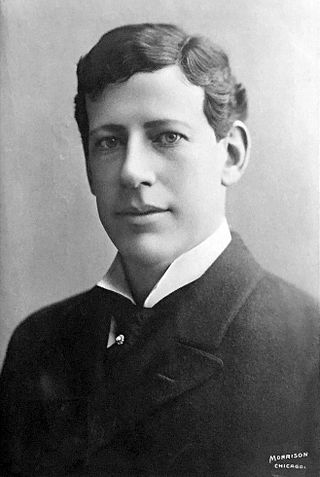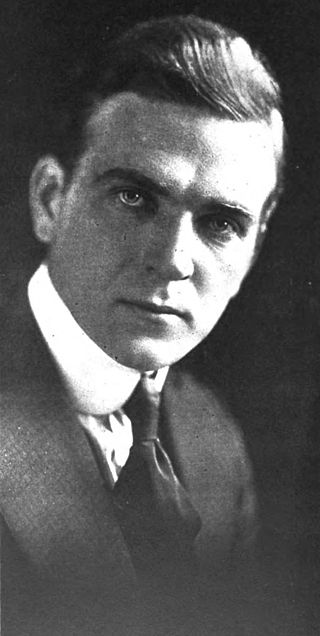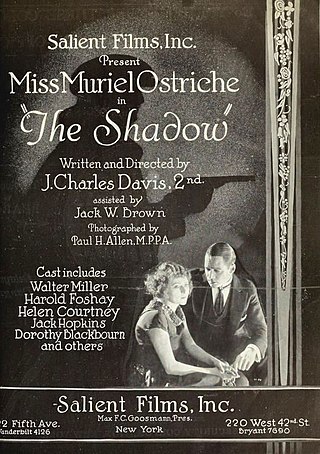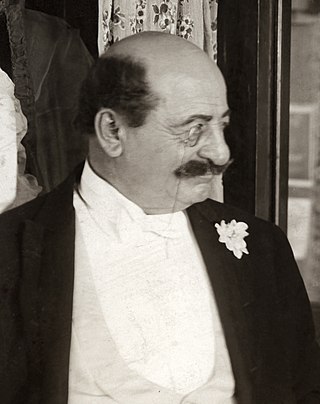Related Research Articles

Florence Lawrence was a Canadian-American stage performer and film actress. She is often referred to as the "first movie star", and was long thought to be the first film actor to be named publicly until evidence published in 2019 indicated that the first named film star was French actor Max Linder. At the height of her fame in the 1910s, she was known as the "Biograph Girl" for work as one of the leading ladies in silent films from the Biograph Company. She appeared in almost 300 films for various motion picture companies throughout her career.

The Biograph Company, also known as the American Mutoscope and Biograph Company, was a motion picture company founded in 1895 and active until 1916. It was the first company in the United States devoted entirely to film production and exhibition, and for two decades was one of the most prolific, releasing over 3000 short films and 12 feature films. During the height of silent film as a medium, Biograph was U.S. most prominent film studio and one of the most respected and influential studios worldwide, only rivaled by Germany's UFA, Sweden's Svensk Filmindustri and France's Pathé. The company was home to pioneering director D. W. Griffith and such actors as Mary Pickford, Lillian Gish, and Lionel Barrymore.

William DeWolf Hopper was an American actor, singer, comedian, and theatrical producer. A star of vaudeville and musical theater, he became best known for performing the popular baseball poem "Casey at the Bat".

Robert G. Vignola was an Italian-American actor, screenwriter, and film director. A former stage actor, he appeared in many motion pictures produced by Kalem Company and later moved to directing, becoming one of the silent screen's most prolific directors. He directed a handful of films in the early years of talkies but his career essentially ended in the silent era.

Antonio Garrido Monteagudo, better known as Antonio Moreno or Tony Moreno, was a Spanish-born American actor and film director of the silent film era and through the 1950s.

Henry Lehrman was an American actor, screenwriter, director and producer. Lehrman was a very prominent figure of Hollywood's silent film era, working with such cinematic pioneers as D. W. Griffith and Mack Sennett. He directed, as well as co-starred in, Charlie Chaplin's very first film, Making a Living.

Henry King was an American actor and film director. Widely considered one of the finest and most successful filmmakers of his era, King was nominated for two Academy Awards for Best Director, and directed seven films nominated for the Academy Award for Best Picture.

Marguerite Snow was an American silent film and stage actress. In her early films she was billed as Margaret Snow.

William Russell was an American actor, film director, film producer and screenwriter. He appeared in over two hundred silent-era motion pictures between 1910 and 1929, directing five of them in 1916 and producing two through his own production company in 1918 and 1925.

George Delbert "Dell" Henderson was a Canadian-American actor, director, and writer. He began his long and prolific film career in the early days of silent film.

Herbert Yost was an American actor who in a career that spanned nearly half a century performed predominantly on stage in stock companies and in numerous Broadway productions. Yost also acted in motion pictures, mostly in one-reel silent shorts released by the Biograph Company and Edison Studios between November 1908 and July 1915. By the time he began working in the film industry, Yost already had more than a decade of stage experience in hundreds of dramatic and comedic roles and was widely regarded in the theatre community "as one of the country's finest stock actors". Reportedly, to reduce the risk of tarnishing his reputation as a professional actor by being identified as a screen performer, Yost often billed himself as "Barry O'Moore" while working in films. He was ultimately cast in scores of motion pictures in the early silent era, although with the exceptions of appearing in three more films in the sound era, Yost spent the remaining decades of his career acting in major theatre productions, almost exclusively on Broadway.

Charles Kent was a British-American stage actor and silent film actor and director. He appeared in more than 140 films between 1908 and 1923. He also directed 36 films between 1908 and 1913.

John T. Dillon was an American actor of the silent era. He appeared in more than 130 films between 1908 and 1936. He died in Los Angeles, California from pneumonia.
Kate Toncray was an American actress of the silent era. She appeared in more than 170 films between 1905 and 1925. She was born in St. Louis, Missouri and died in Manhattan, New York City.

Walter Miller was an American actor of the silent era and the early sound era. He appeared in nearly 250 films between 1911 and 1940.

Russell Bassett was an American stage and film actor. He appeared in 76 silent films between 1911 and 1918.

Thomas Hayes Hunter was an American film director and producer of the silent era. He directed a total of 34 films between 1912 and 1934.

Gladys Egan was an early 20th-century American child actress, who between 1907 and 1914 performed professionally in theatre productions as well as in scores of silent films. She began her brief entertainment career appearing on the New York stage as well as in plays presented across the country by traveling companies. By 1908 she also started working in the film industry, where for six years she acted almost exclusively in motion pictures for the Biograph Company of New York. The vast majority of her screen roles during that period were in shorts directed by D. W. Griffith, who cast her in over 90 of his releases. While most of Egan's films were produced by Biograph, she did work for other motion-picture companies between 1911 and 1914, such as the Reliance Film Company and Independent Moving Pictures. By 1916, Egan's acting career appears to have ended, and she no longer was being mentioned in major trade journals or included in published studio personnel directories as a regularly employed actor. Although she may have performed as an extra or in some bit parts after 1914, no available filmographies or entertainment publications from the period cite Egan in any screen or stage role after that year.

Lime Kiln Field Day is a 1913 American black-and-white silent film produced by the Biograph Company and Klaw and Erlanger.
The Lime-Kiln Club was a fictitious fraternal organization of African-Americans created by writer and journalist Charles Bertrand Lewis for the Detroit Free Press in the late 19th century.
References
- ↑ "Wesley Jenkins with Big Movie Production". The New York Age. 28 Oct 1922. Retrieved 2019-09-04.
- ↑ Willis, Deborah; professor, N. Y. U. "Rare Silent Film With Black Cast Makes A Century-Late Debut". NPR.org. Retrieved 2019-09-04.
- ↑ Child, Ben (2014-09-23). "Oldest surviving film starring black actors to premiere in New York". The Guardian. ISSN 0261-3077 . Retrieved 2019-09-04.
- 1 2 3 "Famous Metro Movie Star Called by Death". The Pittsburgh Courier. 17 May 1930. Retrieved 2019-09-04.
- ↑ Walton, Lester A. (21 Apr 1910). "Music and the Stage". The New York Age. Retrieved 2019-09-04.
- ↑ Slater, Bob (26 Apr 1930). "Theatrical Jottings". The New York Age. Retrieved 2019-09-04.